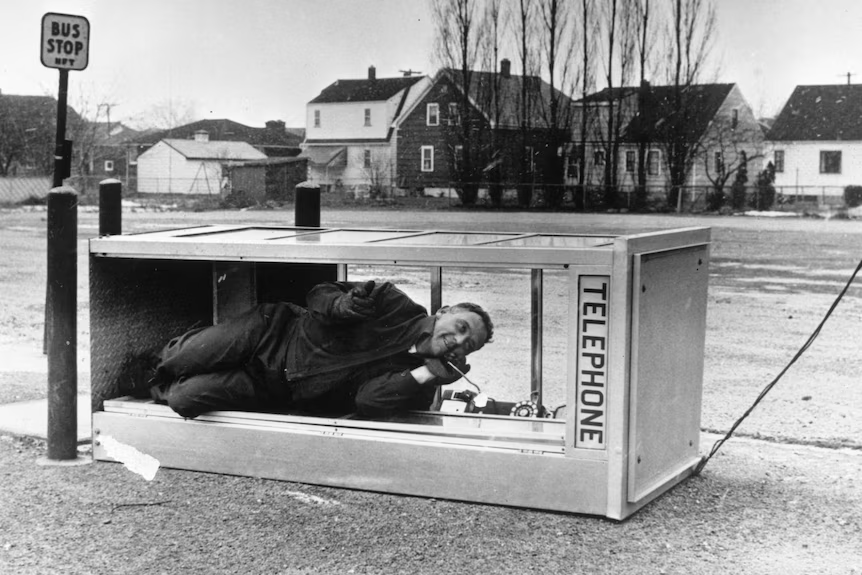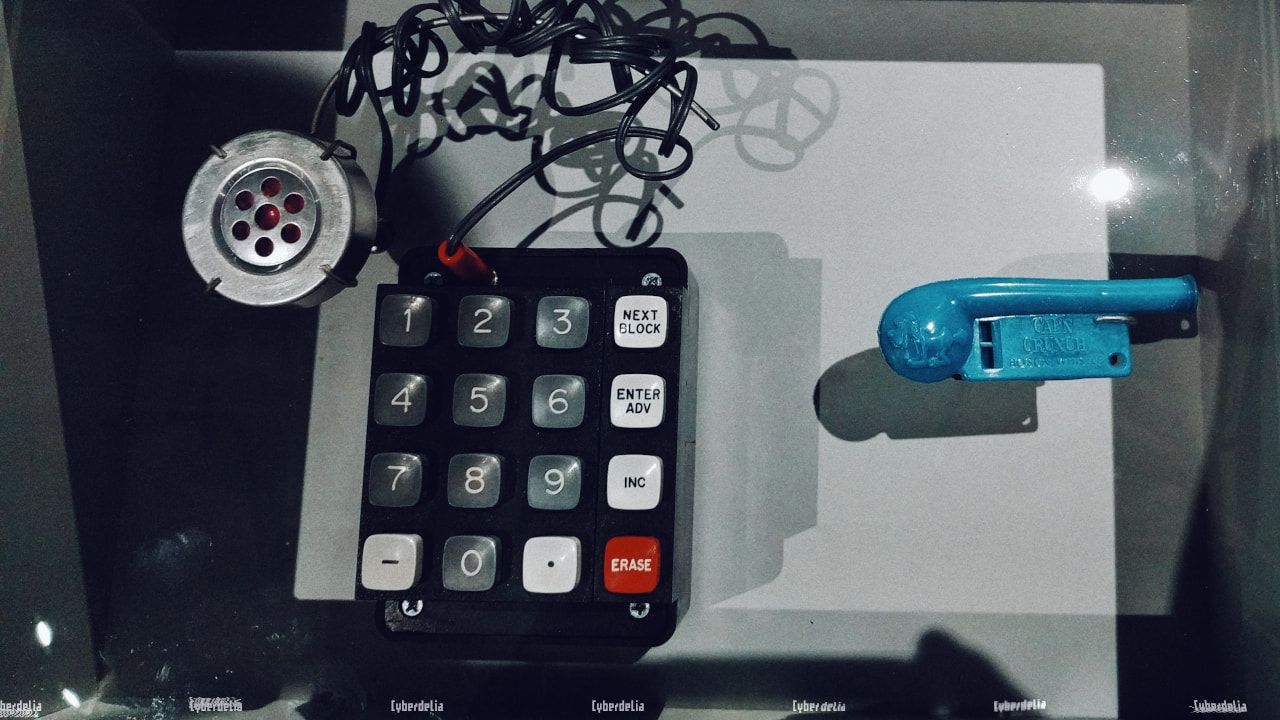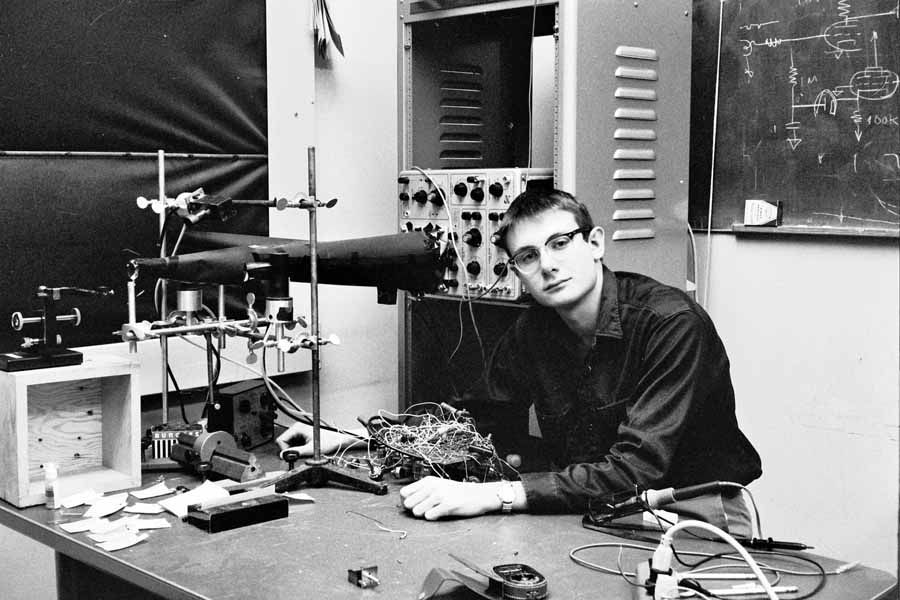Hacker phenomenon: Against or within the System?
With the system or against the system? Fighting against big corporations or working for them?

1960s. John Thomas Draper, later known as Cap'n Crunch, a U.S. son of a U.S. Air Force engineer, discovers phone phreaking by accident and becomes one of the first phreakers in history. Basically, he takes a plastic whistle, the kind that comes free with cereal boxes, and by blowing into it, discovers that automated telephone exchanges decode the signals emitted by phones using a set of sufficiently high sound frequencies. He gets involved and finds the right frequency and manages to make free calls and reach places all over the world. But actually, the idea comes from a student named Danny, to whom John connects after receiving his phone number. John discovers that Danny's number is connected to a primordial phone chat, which uses jargon he is unfamiliar with. When he arrives at Danny's house, he discovers that the guy is visually impaired and that he and two other friends use the phone from his room to phone for free through the use of Danny's keyboard frequencies.
Phreaking is the activity of people who study, experiment with, or explore telecommunications systems, such as devices and systems connected to public telephone networks. The term phreak is derived from "freak" with the ph- of phone and can also refer to the use of different audio frequencies to manipulate a telephone system. Phreak, phreaker, or phone phreak are names used for and by individuals who participate in phreaking.

An Hacker Joke at the White House: Just a legend?
Danny explains to John that the keyboard emits a sound at a frequency of 2600 Hz and allows them to make free phone calls. From there, John connects the idea to the whistle in the Cap'n Crunch boxes, which emits a sound at the correct frequency. Being an expert in electronics, John takes advantage of this discovery and builds the first blue box, which allows them to make free phone calls. Legends abound about what John and his friends accomplished as hackers. Among them is the story of how they managed to obtain one of the White House's top-secret numbers and intercept incoming and outgoing calls; they also intercepted a CIA agent's call to Richard Nixon and discovered that the password to talk to the president was Olympus. This would be the transcript of the brief interview John had with Nixon, a real hacker joke:
John: "Olympus, please."
Operator: "One moment, please..."
Nixon: "What's going on?"
John: "Mr. President, there is a crisis going on here in Los Angeles."
Nixon: "What kind of crisis?"
John: "We are out of toilet paper, Mr. President."

Richard Cheshire’s hacking instructions
John Thomas Draper's group of "friends" includes Richard Cheshire, who focuses on disseminating information within the circles of those who subscribe to the new vision of technology. He founds a magazine with the aim of spreading an alternative use of technology, which he believes must become knowledge shared with the mass of users, and no longer something esoteric and related to circles of a few devotees. Detailed instructions on how to "fool" telephone companies or large corporations are disseminated in articles and magazines, opening up a vision of mass hacking. At the time, magazines had great power to disseminate information. The term "phreaking" itself is introduced to the public in October 1971, when Esquire magazine published an article entitled "Secrets of the Little Blue Box" by Ron Rosenbaum. The article also attracts the interest of other future phreakers, such as Steve Wozniak and Steve Jobs, who later found Apple Computer.
I've come to SteemIt as a friend of Captain Crunch, who I first met at the West Coast Computer Faire in San Francisco in 1977, but I was first introduced to him in the 1971 Esquire magazine article that introduced him to the world. We became friends, and I've helped him out when I could since then. I've never had much in the way of spare resources, but I let him live with me in the early Double Ought's (00's) in my apartment in Florida. Once again, I'm following his lead, and joining this "social blogosphere". Yes, I've got other "social media" accounts at Facebook, Twitter, and Linked In, but I don't post much there unless it's information that I really want to get to a wider audience. I need to think the information is Important, or I'm not going to want to draw attention to myself. That's the fallout from having had the TLA's (Three Letter Agencies) actually tracking you in your past. John and I still refer to people from a certain agency as "The Fibbies" (here).
Technological American Party
The group of popularizers of the new idea of technology is first called the Youth International Party Line, later becoming the T.A.P. (Technological Assistance Program or Technological American Party). Cheshire gets into a lot of trouble with the law for his publications, but he almost always manages to avoid the worst of it by arguing that the articles are meant to tell people what not to do, lumping everything under the idea of illegal things to avoid. The merit of this group may be that it makes people see the use of technology from a different perspective; it does not demonize it, and does not passively use it.
Silicon Valley in ‘n’ out
In the United States, along with these groups of phreakers, the hackers movement continues in parallel. In America, the practice of hacking i is generally traced back to the 1950s, with punch card calculators. Specifically, when some students at MIT find a way to hack into the school's central computer reserved for professors and staff. Later, the practice of breaking into information systems spread and become inextricably linked to the computer phenomenon associated with Silicon Valley, a region where all of America's industrial production related to components and software programming is concentrated. Even Apple, the company that produced the first computer, is founded here by two hackers: Steve Jobs and Wozniak, although not everyone thinks of them as .

The early history of hackers is centered around MIT in the 1950's and 1960's. Naturally curious and intelligent MIT students who had been exploring the phone switching network and the control systems of the Tech Model Railroad Club were drawn to the computers of the MIT Artificial Intelligence Lab (MIT AI Lab). The director of the lab, Marvin Minsky, was sympathetic to the hackers' desire to explore and impressed enough with their accomplishments that he allowed them to have direct access to the machines, even though the true hackers among the group had by then dropped out of school to spend more time hacking. Legendary hacker figures from this time include Peter Deutsch, Bill Gosper, Richard Greenblatt, Tom Knight, and Jerry Sussman (here).
Saboteurs or innovators?
With the system or against the system? On the one hand, we have people who are committed to fighting against big corporations and the privatization of information, but on the other hand, they are also capable of innovating and formulating new ways of using technology, which is becoming a new domain for the wealth of big corporations. It is not for nothing that the best hackers are often hired by the big companies to design and implement new defensive systems to protect databases, which are now increasingly threatened by hackers.
Lee Felseinstein and the ultra-positive concept of technology
In the 1980s, it almost seems that hacking has become the practice of kids looking for easy thrills, but unable to understand the political and social value behind the practice of hacking (how can we not think of the birth of cyberpunk, a social and political narrative genre that emphasizes precisely this?) However, there are also pioneering figures who manage to stop the pulverization of the phenomenon, such as Lee Felseinstein, one of the theorists of the transition to the ultra-positive concept of technology, in particular of the computer. Felseinstein sees the computer as the democratic tool par excellence, and if used in the right way (including politically), it can prevent multinational corporations from centralizing all information, using it for their own benefit and depriving users of the right to access their own data. Hacking, in this case, becomes a strategy for preserving data democracy, a “datacracy”, a fight from behind the information, taking advantage of the multiplication of communication networks that must be conceived on a rhizomatic model, that is, without hierarchies.

And in Europe?
The European hacking movement is different from the American model, but that's for another article!
